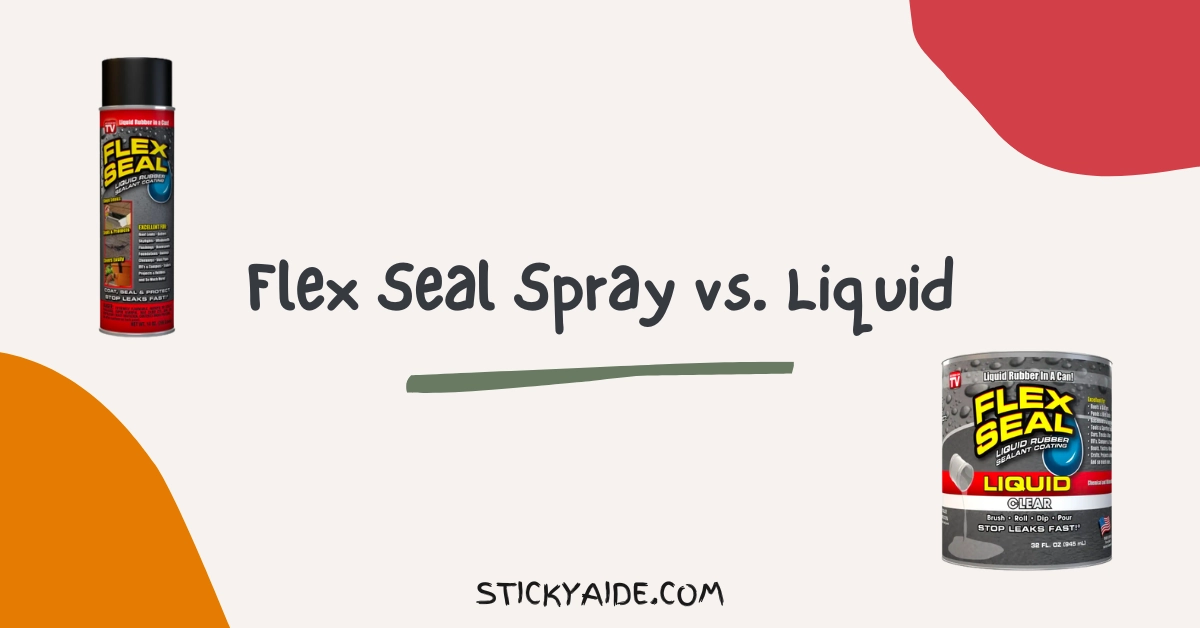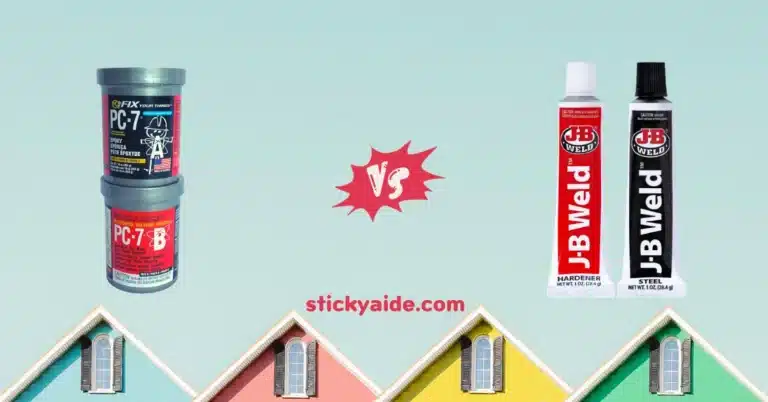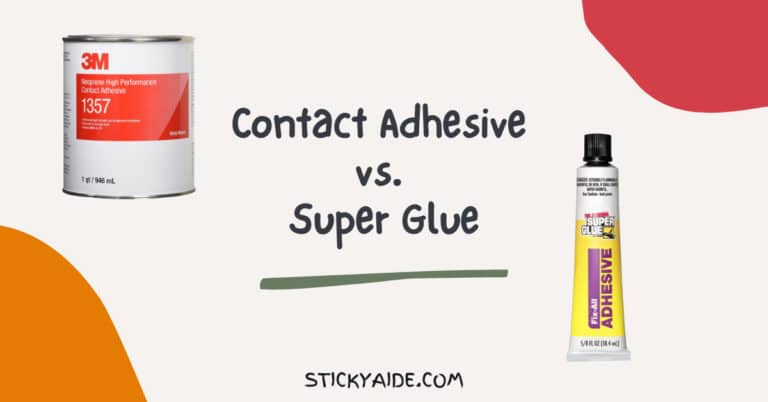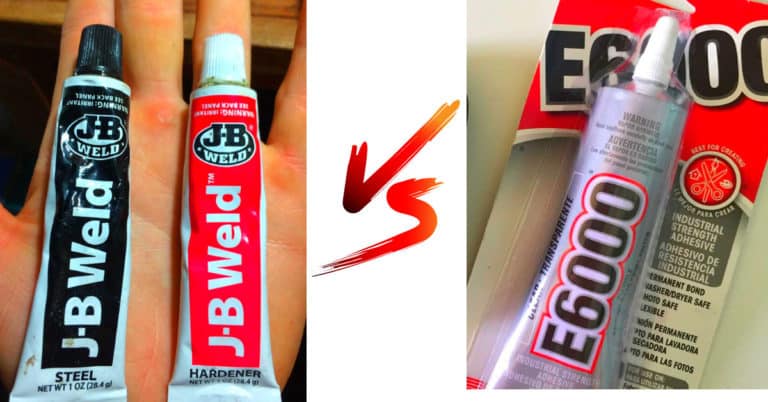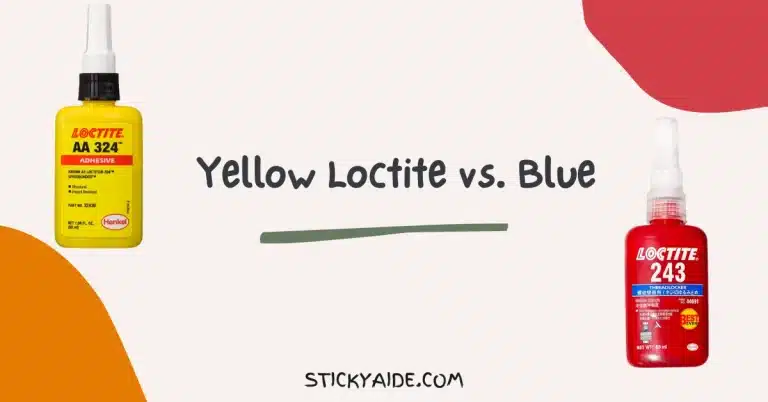Flex seal spray and flex seal liquid are made using different formulas, although both are used to seal, coat, and stop leaks. So, you should be aware of using both of them together. In this article, I will help you differentiate flex seal spray vs. liquid.
Read More: Flex Seal vs. Gorilla Spray
Flex Seal Spray vs. Liquid
About Flex Seal Spray
If you need to seal, patch and repair anything, then flex seal spray could be a good option. Flex seal offers you some liquid rubber in a can, which can be used to give a rubberized coating to stop your leaks after spraying some thick liquid into those cracks and holes.
Flex seal spray is super easy to use because it comes in a can, from which you can spray liquid rubber directly into your cracks and holes. It works on so many things like – roofs, furniture, wood, tile, glass, plastic, and many more.
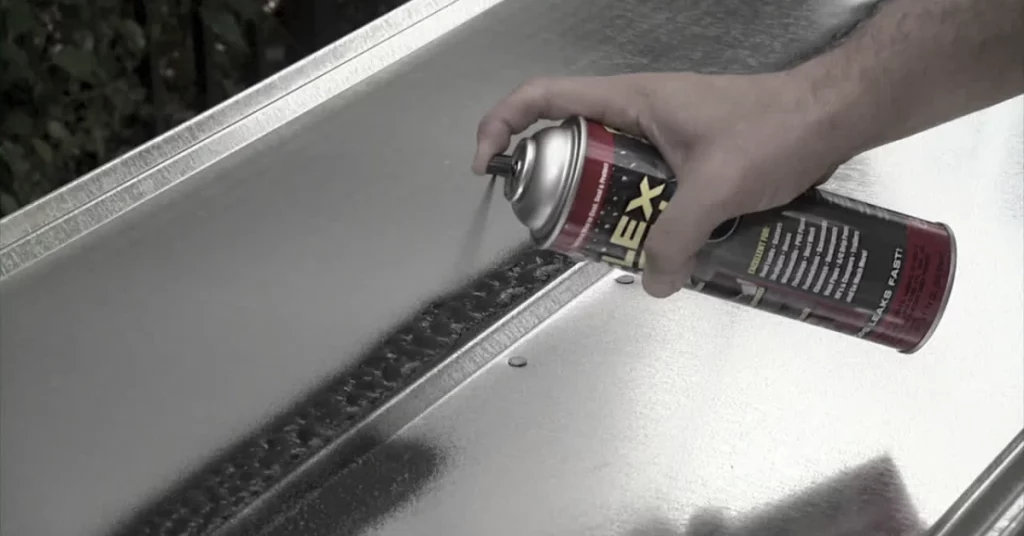
Color Options in Flex Seal Spray
Once you apply flex seal spray on a surface, you can paint it in any color after the liquid rubber becomes dry. Also, the liquid rubber in the can comes in 12 vibrant colors. Flex seal spray is sold in black, white, green, red, blue, yellow, almond, brown, terra cotta, gray, brite, and clear.
Flex Seal Spray: Drying Time
Although the drying time of flex seal spray depends on the thickness of the coating, it also depends on temperature and humidity too. Flex seal spray coating usually dries within a few hours (2 to 3 hours), but it fully cures in at least one day. Actually, it gets stronger over time.
Flex Seal Spray: Covering Areas
Actually, how much area a can of flex seal spray will cover, that totally depends on the number of coats and thickness of the coating. According to the flex seal official website, one max can cover up to 15 square feet, one 14 oz. can cover up to 12 square feet, and one mini 2 oz. can cover up to 2 square feet.
Read More: Flex Seal vs. Epoxy
About Flex Seal Liquid
Flex seal liquid comes in a paint bucket. It is a thick rubberized liquid that may be brushed, dipped, rolled, or poured to create a long-lasting, waterproof coating. Its coating keeps air, water, and moisture out. And its coating is also mildew, chemical, and UV resistant.
You can use flex seal liquid in so many things like – glass, concrete, PVC, wood, copper, fabrics, vinyl, plastic, and many more.
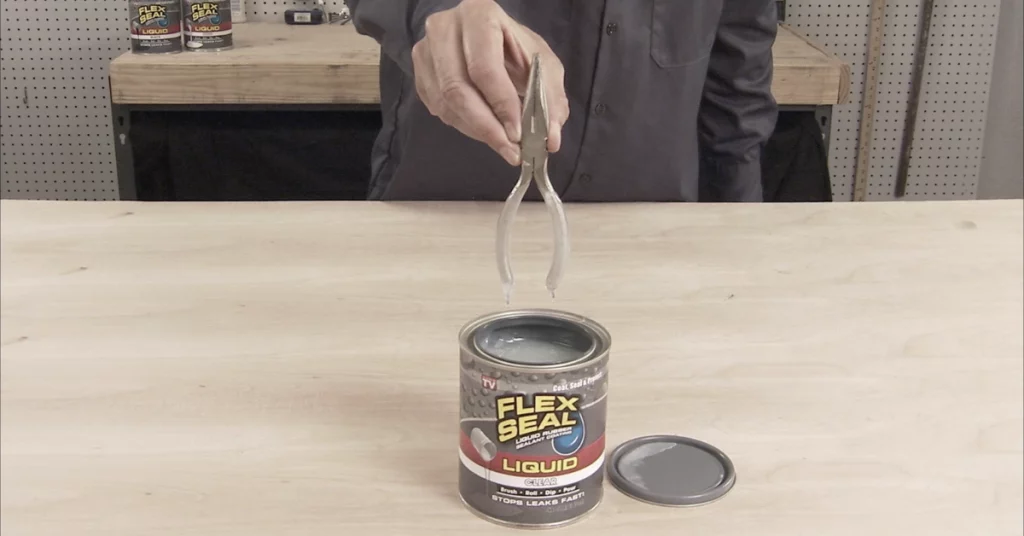
Read More: Flex Glue vs. Flex Seal
Color Options in Flex Seal Liquid
Flex seal liquid does not offer as many colors as flex seal spray does. Currently, it is only available in four colors in the market. Those color options are white, black, gray, and clear.
Flex Seal Liquid: Drying Time
Dry periods for indoor and outdoor applications will differ depending on the temperature and humidity. You can say flex seal liquid has a similar drying time like flex seal spray. But it is recommended that you should apply flex seal liquid in even coats.
And the time difference between two coats should be at least 24 hours. You can remember a hack that is if it is soft after pressing, then it is not dry yet, so you can keep it up to 48 hours to fully dry.
Flex Seal Liquid: Covering Areas
The number of coats and the kind of surface you are coating with flex seal liquid will both affect how much coverage you get. But I can give you a probable estimation. 1 large 16oz, covers up to 18.75 square feet, up to 37.5 square feet can be covered with 1 jumbo 32oz, up to 150 square feet with 1 giant gallon, and up to 375 square feet with 2.5 gallon max size.
Read More: Flex Seal vs. Silicone
What Is The Difference Between Flex Seal Spray and Flex Seal Liquid?
There are some differences between flex seal spray and flex seal liquid, although both of them are created to seal, coat, and stop leaks. The first difference between them is the ease of use.
Flex seal spray is very easy to use rather than flex seal liquid because you can easily spray the liquid rubber directly to the surface of cracks and holes. On the other hand, you have to brush, dip, roll or pour flex seal liquid into the surface of cracks and holes.
The second difference is their applying temperature. The surface temperatures to apply flex seal spray are between 0°F and 100°F. Flex seal spray can resist temperatures between -20°F and 140°F after it has fully dried.
On the other hand, the optimal surface temperatures for applying flex seal liquid are between 32°F and 120°F. Flex Seal Liquid can tolerate temperatures between -80°F and 350°F after it has fully dried.
Read More: Flex Seal vs. Gorilla Spray
Is Flex Seal spray the same as Flex Seal Liquid?
Flex Seal Spray and Flex Seal Liquid are not the same.
While both are designed to seal leaks and coat surfaces, the Spray is an aerosol ideal for quick fixes and small areas, whereas the Liquid is a brush-on or pourable product better suited for larger surfaces and requires more time and preparation to apply.
Choose based on your specific project needs.
Does Flex Seal spray really work?
Yes, Flex Seal Spray does work for its intended purposes, which is to stop leaks and seal small cracks. It’s a rubberized coating that fills in gaps and cracks to create a waterproof seal.
When applied properly, it can effectively block out water and prevent further damage.
However, the success of Flex Seal Spray depends largely on proper application and the nature of the repair. The surface should be clean, dry, and free of grease or oil.
Also, the spray is designed to seal small cracks and holes, so larger or structural damages may need a more robust solution.
It’s important to remember that while Flex Seal products can be effective for many temporary fixes or small repairs, they are not a substitute for professional repairs in more severe cases, especially when safety is a concern.
Last Opinion
Both types of flex seal are good for protecting and sealing cracks and holes. But you can choose the one that fulfills your needs. If your working surface is small and you want an easy solution, then go for flex seal spray. Otherwise, if your working surface is big and you need so much coating to do, then you can go for flex seal liquid.
I hope my discussion on flex seal spray vs. liquid will help you to distinguish them and will also help you to choose the right one. If you have any doubts in mind, then just comment below.

